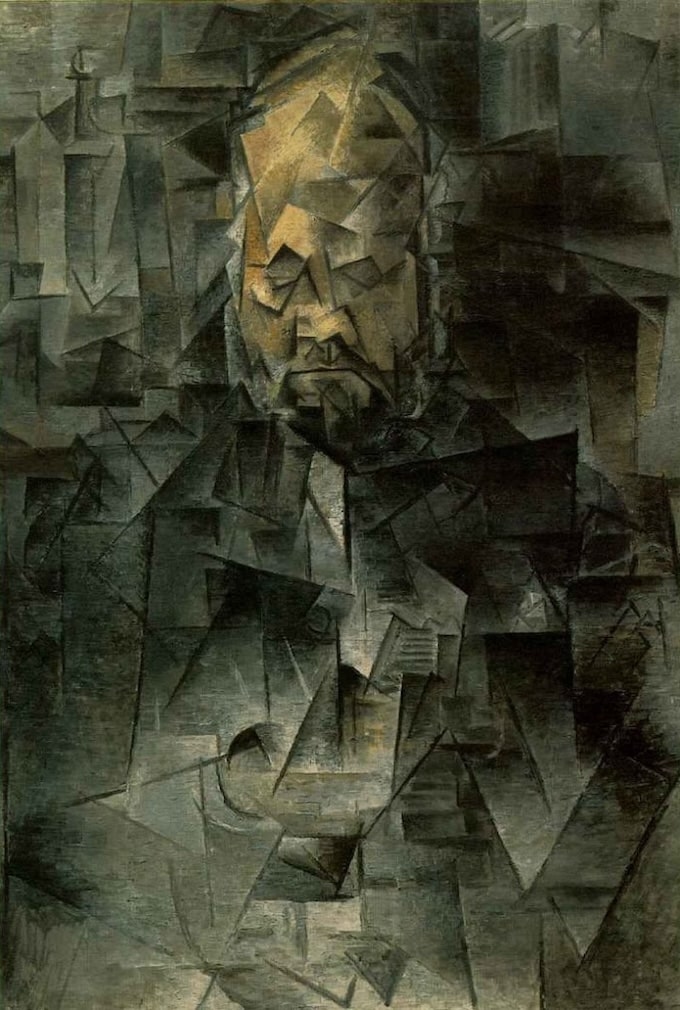Seeing Beyond the Surface: A Deep Dive into Analytical Cubism

What are you expecting to see when you look at a painting? A moment in time? A scene that has been caught in the frame? The early 20th century movement known as Analytical Cubism subverted those fundamental assumptions. Under the leadership of Pablo Picasso and Georges Braque, this groundbreaking art movement radically altered our understanding of reality, form, and space in visual art.
Analytical Cubism, one of the most significant and academically ambitious movements in contemporary art history, will be discussed in this post along with its origins, philosophy, style, and legacy.
The Background and Origins of a Revolution
By the early 1900s, Impressionism, Post-Impressionism, and a rising discontent with classic realism had already taken hold in the Western art world. In order to portray the contemporary experience, artists were looking for fresh approaches. Paul Cézanne's final paintings and Picasso's introduction to African traditional masks about 1907 sowed the seeds of experimentation.
Cylinders, spheres, and cones are examples of the fundamental geometric shapes that Cézanne suggested be used to describe the world. That idea was expanded upon by Picasso and Braque. They posed this question: what if we dissected forms completely in order to reconstruct them from various angles, rather than only simplifying them?
As a result, Analytical Cubism—named for the analytical, nearly scientific breakdown of objects into their constituent parts—was born.

The Castle in La Roche Guyon (1909; France) by Georges Braque
Analytical Cubism's Method of Dissecting Reality
Picasso's and Braque's canvases were dominated by Analytical Cubism from 1908 to around 1912. The following characterized the style:
Formal fragmentation occurred when objects were divided into geometric shapes and intersecting planes.
Multiple perspectives: Artists displayed an object from a number of views simultaneously, including front, side, and top, all of which faded into a single image rather than presenting it from a single point of view.
Limited color scheme: By focusing on form over color and avoiding distraction, the monochromatic brown, grey, and ochre tones strengthened intellectual discipline.
Flattened space: The background and foreground were reduced in depth, creating a shallow pictorial field.
Understanding the essence of the subject was the goal of this abstraction, not being mysterious. It required viewers to actively interact with the artwork, mentally piecing together the original image—a violin, a bottle, a human face—from the shards.
Artists and Important Works
Among the most notable instances of Analytical Cubism are:

"Portrait of Ambroise Vollard" by Pablo Picasso (1910)
The intricate portrait "Portrait of Ambroise Vollard" by Pablo Picasso (1910) features Vollard's head blending into a network of sharp lines and shadows. Identity is derived from a deeper, intellectual structure rather than from outward similarity.
"Violin and Candlestick" by Georges Braque (1910)
"Violin and Candlestick" by Georges Braque (1910): The items are so abstracted that they are nearly unrecognizable. Though they seem to be viewed from several perspectives simultaneously, the violin and candlestick are cohesive parts of a single piece despite their broken appearance.
Even though Picasso and Braque were the main figures, other painters, such as Juan Gris, would subsequently expand on their work, paving the way for the following stage, Synthetic Cubism, in which collage and color were once again used.
The Philosophy Behind It: It's More Than Just a Style
In addition to being a visual language, analytical cubism was a philosophical position.
The question it raised:
Can you explain what it means to "see" something?
Can more than one aspect or moment be captured in a painting?
What does visual truth mean—knowledge or appearance?
Ideas from modern philosophy and science, like as Einstein's theory of relativity, which also challenged fixed viewpoints, were reflected in many ways by Analytical Cubism. Picasso and Braque asserted that neither time nor space were absolute, nor were visual experiences.
Intellectual participation was required for this movement. Instead of being a passive spectator, the viewer was now actively involved in the process of deriving meaning from intricate visual cues.
Glass on a Table (c.1909; France) by Georges Braque
Criticism and Reception
Analytical Cubism was a highly contentious movement at the time. For many, it appeared disorganized and unintelligible. Many critics found it difficult to identify the topic at all, and some referred to it as "puzzle painting." For artists and intellectuals of the avant-garde, however, it was an exciting break from tradition—a release from the oppression of the one-sided perspective.
As time went by, Analytical Cubism became increasingly respected. It influenced designers, architects, and abstract painters, and it became a fundamental component of modern art education.

The City on the Hill (1909; France) by Georges Braque
Why Analytical Cubism Is Still Important in the Legacy
A large portion of abstraction in the 20th century was based on Analytical Cubism. Artists learned to think beyond representation and to experiment with form, idea, and perception. It may have prevented the emergence of movements like Abstract Expressionism, Constructivism, and Futurism.
Additionally, the function of the artist was reinterpreted, moving from mimicking nature to interpreting reality. And in doing so, it changed the viewer's function as well, changing them from product to meaning participant.

The Park at Carrières-Saint-Denis (1909; France) by Georges Braque
Conclusions and Analysis It's not always simple to understand cubism at first glance. It challenges us to take our time, examine things carefully, and adopt new perspectives. However, that difficulty is what gives it potency. It challenges us to engage in conversation, not only about the artwork but also about perception in general.
Analytical Cubism continues to emphasize the importance of intricacy, investigation, and depth in a world overflowing with rapid pictures and superficial impressions.
Join our classes to enhance & improve your memory skills and let your child unlock the power to retain information from every moment of his/her life!

